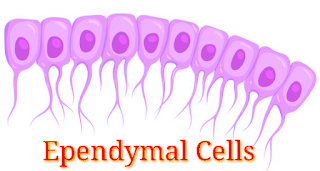Spreading Hope & Awareness: Understanding Cancer Better
 |
| Together Cancer Awareness and Hope |
Understanding Cancer:
Cancer is not just one disease but a group of over 100 different diseases. It happens when cells in the body grow uncontrollably. These abnormal cells can invade other parts of the body, posing severe health risks. The most common types include breast cancer, lung cancer, skin cancer, and prostate cancer, but it can affect nearly any part of the body.
Why Awareness Matters:
Early detection can be life-saving. Many types of cancer can be treated more effectively if caught early. However, lack of awareness and stigma often prevent people from seeking timely help. Cancer awareness campaigns help educate people about symptoms, risk factors, and screening methods that could save lives.
Prevention and Early Detection:
Know the Symptoms: Unusual lumps, unexplained weight loss, persistent cough, or changes in moles are signs that shouldn't be ignored. Consult a doctor if you notice these.
Common Cancer Symptoms: Recognizing Hidden Illness
Cancer is a disease that often doesn’t show specific symptoms in its early stages, making awareness and timely recognition crucial. In this post, we’ll explore some common cancer symptoms in detail, helping you understand them better and encouraging you to consult a doctor if necessary.
1. Sudden Weight Loss
If you experience unexpected weight loss without any changes to your diet or exercise routine, this could be a concern. This symptom is often associated with cancer, particularly gastrointestinal cancers (like stomach cancer). Rapid growth of cancer cells can outpace the body's normal cells, leading to unexplained weight loss.
What to Do? If you notice a 5-10% weight loss over a few months without any intentional efforts, it’s essential to pay attention to this symptom. Consider consulting a doctor for further evaluation.
2. Persistent Fatigue
Constant fatigue is another common symptom of cancer. This type of fatigue is not relieved by rest and can significantly affect your daily life. Cancer-related fatigue is often due to cancer cells consuming energy and nutrients from the body.
What to Do? If this fatigue is impacting your daily activities and persists over time, don’t hesitate to reach out to a healthcare professional.
3. Persistent Cough or Blood in Cough
A persistent cough or coughing up blood can be serious and is often associated with certain types of cancers, like lung cancer. This symptom should not be overlooked as it can indicate underlying health issues.
What to Do? If you have a cough that lasts more than a month or you notice blood in your sputum, it’s crucial to seek medical attention immediately.
4. Loss of Appetite or Unexplained Changes in Eating Habits
A sudden lack of interest in food or significant changes in appetite can be warning signs of cancer. This can happen due to hormonal changes or the body’s response to cancer.
What to Do? If you experience a marked change in your appetite or find yourself eating much less without a clear reason, consult a healthcare provider for advice.
5. Unexplained Lumps or Swelling
Finding a lump or experiencing unusual swelling in any part of your body can be a warning sign of cancer. This is especially true for cancers like lymphoma or breast cancer, where swelling may occur in the lymph nodes or breast tissue.
What to Do? If a lump or swelling persists for more than a month or continues to grow, it’s important to see a doctor for evaluation. They can perform tests to determine the cause.
Conclusion
Understanding cancer symptoms and recognizing them early is vital for timely diagnosis and treatment. If you experience any of these symptoms, don’t hesitate to contact a healthcare professional. Awareness and early intervention can significantly impact health outcomes. Taking care of your health and the health of your loved ones should always be a priority.
Supporting Those in the Fight:
Cancer can be a lonely journey, but nobody should face it alone. Family, friends, and even online support groups play a vital role in providing emotional and psychological support. As a society, let’s show compassion, reduce stigma, and help patients feel they are not alone in their fight.
How Can You Help?
Donate to Cancer Research: Funds are critical for advancing treatments and finding cures.
Volunteer Time: Even small acts of kindness can make a big difference for patients and their families.
Spread the Word: Share posts, articles, and reliable information about cancer on your social media to educate more people.
Together, We Are Stronger
Cancer is a formidable adversary, but the human spirit is stronger. By staying informed, spreading awareness, and supporting each other, we can face this challenge together. Let’s make every day a step towards a cancer-free world.















